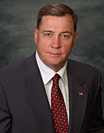Steve Silvers' resume'
SILVER, HADDEN & SILVER
A Professional Law Corporation
Biographical Sketch
The law firm that is now Silver, Hadden & Silver originated in November, 1971. Since that time, the office has concentrated on providing full service legal representation for public employee organizations and their members, including labor negotiations and contract enforcement and enforcement of statutory rights. Presently, Silver, Hadden & Silver is actively representing between 75 and 100 public employee organizations throughout the State of California. Almost all of those organizations consist of public safety employees.
Silver, Hadden & Silver prides itself on performing high quality legal services. The members of this office take great pains to supply prompt and efficient service, particularly in cases of emergency. This firm maintains a 24-hour answering service and frequently responds to provide legal representation to clients in the middle of the night and on weekends.
BIOGRAPHICAL INFORMATION
STEPHEN H. SILVER
Undergraduate Education:
UCLA, Baccalaureate (BS) 1962; Majors: Mathematics and Accounting
Law School:
University of California (Hastings College of Law) J.D. 1965; Class standing - 4th out of 256; Honors: Order of the Coif National Honor Society (Top 10% of Class); President, School Honor Society
Professional Acknowledgments:
Grader, California State Bar Exam, 1970;
Lecturer, California Continuing Education of the Bar,
Administrative Law, 1970 and 1974;
Lecturer, Practicing Law Institute ("Recent Litigation and Legislation Involving Impact of Proposition 13 of Public Section Labor Relations") 1978;
Lecturer, Practicing Law Institute ("Public Sector Labor Relations") 1980;
Monthly Lecturer, California State University, Long Beach
Center for Criminal Justice Research and Training,
1976-1985 ("The Police and Their Civil Rights")
Author California Continuing Education of the Bar, California Administrative Mandamus, Second Edition, Chapter 10;
California Local Government Collective Bargaining: A Legal Guide and California Peace Officers Rights: A Legal Guide
Employment Experience:
1965 - 1968 Deputy Attorney General, State of California, Administrative Law Section, San Francisco and Los Angeles offices
1968 - 1970 Associate, Long & Levit, San Francisco; Civil Litigation
1970 - 1971 Associate, Kurlander, Solomon & Hart, Santa Monica; Labor Relations and Administrative Law
1971 to Present Senior Partner, Silver, Hadden & Silver, Santa Monica; Labor Relations and Administrative Law -- with emphasis on public employee contract negotiations, enforcement of contractual and statutory rights through litigation and representation in disciplinary investigations and appeals.
REPRESENTATIVE LIST
Anaheim Police Association
Anaheim Firefighters’ `Association, Local 2899
Arcadia Firefighters’ Association
Arcadia Police Officers’ Association
Beverly Hills Firemen’s Association
Beverly Hills Police Officers’ Association
Municipal Employees’ Association of Beverly Hills
Beverly Hills Management and Professional Employees’ Association
Brea Police Association
Carlsbad Police Officers’ Association
Carpinteria-Summerland Firefighters’ Association, Local 3368
Chula Vista Firefighters’ Association, Local 2180
Colton Police Association
Costa Mesa Firefighters’ Association
Criminal Justice Attorneys Association of Ventura County
Culver City Firefighters’ Association, Local 1927
Culver City Police Management Group
Downey Police Officers’ Association
Downey Public Safety Auxiliary Association
El Monte Police Officers’ Association
El Segundo Firefighters’ Association
El Segundo Police Officers’ Association
Fontana Police Management Association
Fountain Valley Firefighters’ Association
Fountain Valley Police Officers’ Association
Fresno County Deputy Sheriffs’ Association
Fullerton Firefighters’ Association, Local 3421
Fullerton Police Officers’ Association
Gardena Police Officers’ Association
Glendora Police Management Group
Guadalupe Police Officers’ Association
Hawthorne Police Officers’ Association
Hawthorne Executive Group
Huntington Beach Firefighters’ Association
Huntington Beach Fire Management Association
Huntington Beach Police Management Association
Huntington Beach Police Officers’ Association
Inglewood Management Employees’ Association
Inglewood Police Management Organization
Irvine Police Association
Irwindale Police Officers’ Association
Kern Law Enforcement Association
La Habra Firefighters’ Association
La Palma Police Officers’ Association
LaVerne Firefighters’ Association
Latin American Law Enforcement Association
Lompoc Police Officers’ Association
Long Beach Firefighters’ Association
Los Angeles County Professional Peace Officers’ Association
Los Angeles Police Protective League
Manhattan Beach Firefighters’ Association
Manhattan Beach Police Officers’ Association
Montebello Firefighters’ Association
Newport Beach Firefighters’ Association
Newport Beach Police Employees’ Association
City of Orange Police Association
Ontario Police Officers’ Association
Oxnard Firefighters, Local 1684
Oxnard Police Officers’ Association
Palos Verdes Police Officers’ Association
Placentia Police Management Association
Pomona Police Officers’ Association
Port Hueneme Police Officers’ Association
Rancho Cucamonga Professional Firefighters’ Association
Redlands Police Officers’ Association
Redondo Beach Firefighters, Local 2787
Redondo Beach Police Officers’ Association
Riverside City Firefighters’ Association
Riverside Police Administrators’ Association
San Bernardino County Safety Employees’ Benefit Association
San Diego City Schools Police Officers’ Association
San Fernando Police Officers’ Association
Santa Barbara City Firefighters’ Association
Santa Barbara County Firefighters, Local 2046
Santa Margarita Water District Employees’ Association
Santa Maria Police Officers’ Association
Santa Monica Firefighters’, Local 1109
Santa Monica Municipal Employees’ Association
Santa Monica Police Officers’ Association
Simi Valley Police Officers’ Association
South Pasadena Police Officers’ Association
Specialized Police Officers’ Association of Ventura County
Tustin Police Officers’ Association
Ventura City Firefighters’ Association, Local 3431
Ventura Police Officers’ Association
Ventura County Deputy Sheriff’s Association
Ventura County Professional Firefighters’ Association
Ventura County Professional Peace Officers’ Association
Whittier Police Officers’ Association
A letter from Steve Silver on certification.
November 29, 2005
Dear L.A. County Prosecutors;
The purpose of this communication is to respond to the two inquiries posed by your ADDA association president Steven Ipsen last week. The first elicited my assessment, based upon my over 35 years of representing employee organizations comprised of public employees, whether DDAs would do better at the bargaining table representing themselves or affiliated with a large international union like SEIU 660. I preface my response by explaining that the vast majority of my clients have been local employee organizations consisting of public safety employees (police. fire, deputy district attorneys etc.) Many of those organizations are members of, or have affiliations with, large international unions. However, they are not represented at the bargaining table, or in other critical matters involving their employment relations, by representatives of the union.
It always has been my perception that the most effective representation occurs when there is a strong unity of interest among the employees being represented. On those occasions where the employee organization, or union, represented a diverse group of employees (either in the same bargaining unit or multiple bargaining units), it appeared to be difficult for the entity to focus on the needs of any one particular group of employees. In addition to diversion and fragmentation, a more serious problem can arise in the form of actual, or perceived, competing interests among the various classes of employees. For example, if the compensation of one group is significantly below an established marketplace, whereas another group represented by the same employee organization is paid at a much more competitive level, no matter the outcome of these dual negotiations, there is a likelihood that at least one of the categories of employees will feel short-changed. If the under-compensated employees receive greater increases, the other group will likely feel that it came at their expense. On the other hand, if all employees receive the same increase, the under-compensated group is likely to feel that it was held back because of a perceived need by the union to maintain uniformity among the members.
I certainly am aware of the opposite point of view that there is greater strength in numbers. While it is hard to challenge that claim, I should point out that it is predicated upon a belief that, the greater the number of employees who will support a cause, the better the likelihood of prevailing. However, I question the premise that employees who have no direct interest in a particular dispute and who will not benefit directly from the outcome will effectively add any support to that cause. The same analysis would apply with respect to a claim that a larger organization has greater resources available. Again, the question is the willingness of a large organization to allocate a disproportionately large portion of its resources to a relatively small group of members.
I don’t pretend to have the answers to those questions. I suspect that they depend upon the particular circumstances.
I have represented local organizations made up of employees who formerly were represented by an entity with a much larger and more diverse membership. One vivid example is the Attorneys’ Association in Ventura County. Ventura County DDAs had been represented by SEIU. They decertified and later certified as an attorney bargaining group that was not affiliated with any larger union. I have no doubt that their members would tell you that they have been much more successful in all aspects of employee relations, including collective bargaining, as a smaller, homogeneous unit than they were as members of a much larger county-wide organization.
In summary, I have found that the smaller and more homogeneous the bargaining group, the more effective its ability to successfully bargain. This is particularly true with public safety groups. I recommend great caution and careful study before affiliating with any larger organization.
The second question posed to me involved assessing the risk of potential retaliation by the County should you choose to seek to be represented by an employee organization. I can only give my superficial assessment, as I have not fully explored the issue. However, based on my understanding of the current circumstances, I can form a preliminary assessment. In my opinion, it would be a clear violation of California Government Code Section 3506 to condition the continual granting of benefits, or to decline to provide any form of compensation, based upon the “represented” or “unrepresented” status of the affected employees. The case of San Leandro Police Officers’ Association v. City of San Leandro (1976) 55 Cal.App.3d 553, held that affording less favorable treatment to employees in the same job classification simply because they elected to exercise their statutory rights to form, join or participate in an employee organization violated Section 3506.
In addition, I draw your attention to recently enacted Section 3504.5(c) of the California Government Code which reads as follows:
“The governing body of a public agency with a population in excess of 4,000,000, or the boards and commissions designated by the governing body of such a public agency shall not discriminate against employees by removing or disqualifying them from a health benefit plan, or otherwise restricting their ability to participate in a health benefit plan, on the basis that the employees have selected or supported a recognized employee organization. Nothing in this section shall be construed to prohibit the governing body of a public agency or the board or commission of a public agency and a recognized employee organization from agreeing to health benefit plan enrollment criteria or eligibility limitations.”
The retroactive application of this provision was recently upheld by the Court of Appeal in the case of Union of American Physicians and Dentists v. Los Angeles County Employee Relations Commission (2005) 131 Cal.App.4th 386.
Finally, I am confirming that I will be available Wednesday, November 30, 2005 to answer additional questions about the risks and benefits of collective bargaining as well as present a streamlined version of a program I have prepared that attempts to explain what the negotiations process known as “collective bargaining” is really like. I plan to identify the basic underlying principles that individuals participating in the negotiations process should keep in mind at all stages. At the request of Steve Ipsen, I have agreed to meet at a local cable access studio so that the ADDA can tape and distribute this information so that you can better make the personal decision regarding participation in the collective bargaining process.Stephen H. Silver


No comments:
Post a Comment